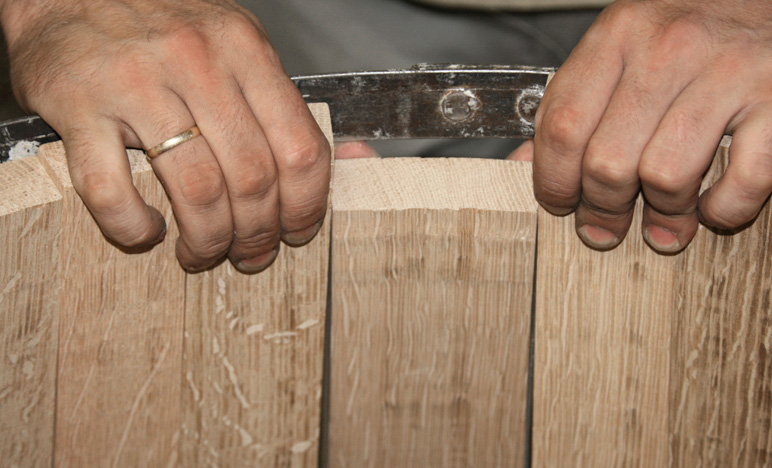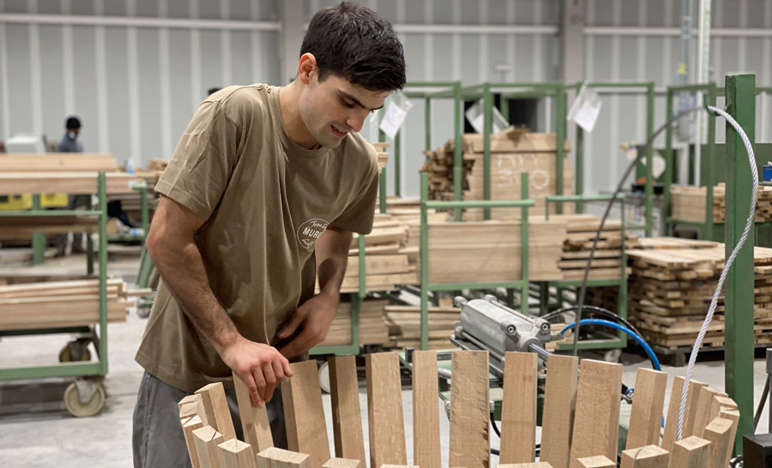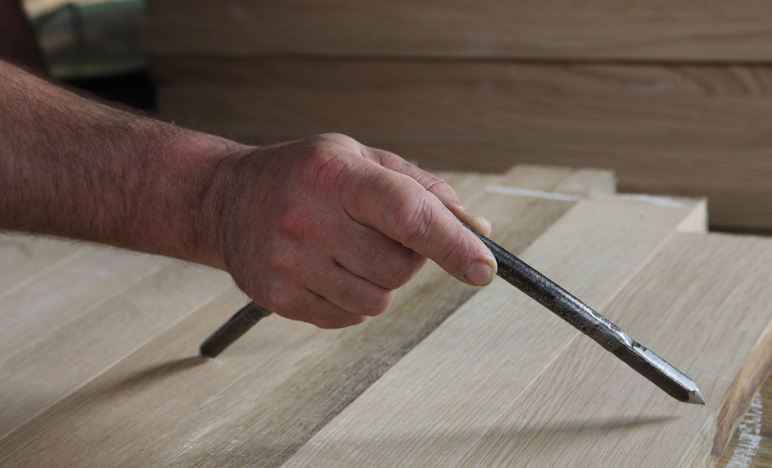Master cooper: the art of barrel making
That cooperage is an art is undeniable for anyone who has witnessed the process of creating a barrel. Like a good tailor who tailors every detail of a bespoke suit, the master cooper must fit each piece to suit the needs of its wearer.
The cooper’s trade goes hand in hand with the birth of the first barrels, more than two thousand years ago. It is an age-old job whose know-how and tools have been passed down from generation to generation, from father to son, forming part of the intangible heritage treasured by human beings. A wisdom that is transmitted and acquired by working.
Patience, passion and skill are needed to learn the trade. Our founder, Justo Murúa, did so under the guidance of the French master cooper Jean Pineau at the end of the 19th century, when he was almost a child, in the cooperage workshop of the Marqués de Riscal winery. From 1898, in his own cooperage in Logroño, he himself became the master of subsequent generations, making it the most important cooperage in La Rioja and one of the first cooperages in Europe.
At Tonelería Murúa, the apprenticeship to become a good cooper is an art in which no less than five years are invested. Because, to become a master cooper, you have to go through all the stages of production that allow you to fully master the process. During this time, the apprentices learn the details of the trade in each of its phases, and then move on to the one most suited to their skills or the one in which they are most needed.
Although today technology has made its appearance in some of the processes, cooperage is still a craft that has survived the passing of the centuries. From this blend of tradition and technology, each Murúa barrel is born, a living testimony to the experience of generations that evolves on the basis of the results of research carried out with universities and winemakers’ associations.
The work of the coopers requires skill, strength and technique. This is the only way to avoid possible leaks and having to repeat the whole process.
A process that begins after the wood has finished drying, which at Tonelería Murúa can take an average of 24 months in the case of American oak or 36 months in the case of French oak.
Once the wood has been dried, it is time to enter the cooperage to start shaping the barrel. This begins with the staves being cut to different widths, planed and selected by size. With the help of a metal ring, or cello, the cooper will assemble the barrel body stave by stave, discarding those that do not seem appropriate. This is a completely manual job that requires a great deal of precision and, indeed, a keen eye.
Once the body is in place, the wood is moistened with steam to mould it without splitting. For this taming process, the barrel-maker uses a towrope to tighten the staves and create the barrel with its characteristic rounded shape so that the assembly is perfect.
Once the barrel has been assembled and fixed with new cellos, another crucial moment arrives: the interior toasting, which is always carried out with wood from the same oak. The level of toasting will depend on the requests of each winery: light, medium, intense…
After toasting, which can take between half an hour and three hours, the barrel is checked to ensure that there are no faults. After this sieving, the work is not yet finished, it is time to put the bottoms or lids on. Normally, the bottom is made up of seven boards, each with its own name, but sometimes it can be made up of nine or even more. The boards are joined together by means of double points, with a sheet of bulrush at the joint to ensure watertightness. The ring is the slit that makes it possible to join the staves to the bottom.
The last element of the barrel is the bung, which can be made of oak wood or food-grade silicone.
At Tonelería Murúa each barrel is unique. It is not a slogan or a catchphrase, but the result of being made to order, according to the demands of the winery and the wine it is going to age.
The fourth generation now at the helm has been able to create a sustainable and productive project that seeks quality and continuous improvement in the processes and in the final product. Barely a year ago, the new facilities in Navarrete were inaugurated: a functional and productive factory that improves all the processes, but maintains the traditional and artisan method that always involves making a good barrel… by eye of the beholder.
YOU WILL FIND US AT OUR NEW ADDRESS: AVDA LENTISCARES 35, 26370 NAVARRETE, LA RIOJA.






